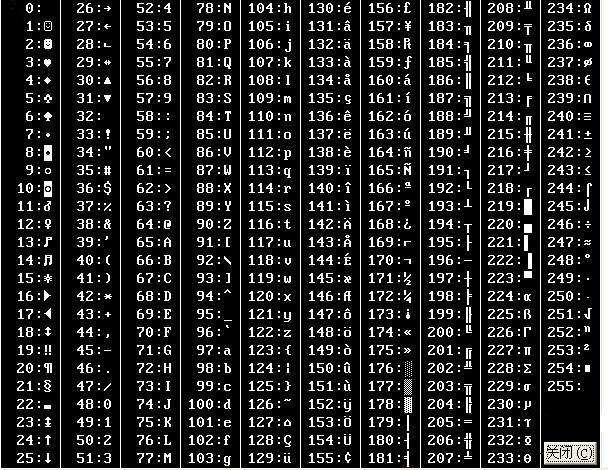1, bit (bit) from the English 'bit, transliteration of "bits" indicating bits. Bit is the smallest unit of data stored inside the computer, 11010100 is an 8-bit binary number.
A bit can represent only two states 0 and 1;
two binary bits can represent four states 00,01,10,11;
three eight states may represent a binary number
2, byte (byte) bytes from the English Byte, transliteration of "Bight", denoted by a capital "B" on the diet. Byte information (or the information stored in the hard disk or memory) transmitted through the network, the basic unit of computer data processing.
Computer information measurement unit for metering technique storage capacity and transmission capacity of
a computer to store bytes of information and interpretation, a predetermined byte consists of eight bits, i.e. one byte is equal to 8 bits ( 1Byte = 8bit).
A minimum of eight binary numbers 00000000, 11111111 maximum;
typically 1 byte can be stored in an ASCII code, two bytes can store a character code GB.
A ascll code is a byte, because the binary code is ascll range from 00,000,000 to 11,111,111, a decimal range of 0 to 255,

3, words ((Word) computer data processing, one access, data processing and transmission length is referred to as word (word).
A word is composed of one or more (typically bit byte integer) bytes form a word length computer determines its CPU processing time operating real-digit number, the larger the word length computer can be seen, the more its superior performance.
4, two pairs of words is called a quadword (Qword)
It refers to a unicode encoding UCS-2, and is two bytes in length
utf-8 is a variable length coding method, it can be 1 to 4 bytes of one symbol, the symbol changes depending on the length in bytes
utf-16, the advantage is that most of the characters are stored in bytes (2 bytes) of a fixed length, but can not UTF-16 encoded compatible ASCLL
UTF-32 (or UCS-4) is a fixed length of 4 bytes stored;
The placeholder java: byte: a byte (8 bits); short: two bytes (16 bits); int: four bytes (32 bits) (length of one word); Long: eight bytes ( 64); a float: four bytes (32 bits); Double: eight bytes (64 bits)
In the C ++ 6.0, BYTE and WORD, DWORD essentially is a kind of the unsigned integer, that is non-char-BYTE symbols (essentially the char type is also a 1-byte integer), a WORD unsigned short type, DWORD is an unsigned long type.
char type is 1 byte long, short type is 2 bytes, int type and long lengths are 4 bytes, it is considered that the BYTE WORD, DWORD variables respectively defined by 1 byte, 2 bytes, 4 bytes of memory, is consistent with the literal meaning bYTE and WORD, DWORD of.